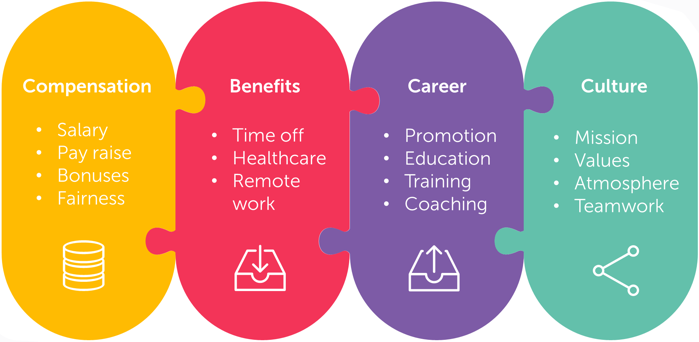To attract ‘ideal’ candidates you need an employer branding strategy. Your employer brand is the perception and reputation that your business has among your current employees and any potential future employees.
A successful employer branding strategy needs to answer a core question for your current and potential employees: What makes your business the best place to work?
Here are two steps to help you develop a successful employer branding strategy:
Decide what success looks like?
You need to decide what it is you want to achieve from your employer branding strategy? Is it increasing the number of ‘ideal’ candidates applying for a vacant position? Is it filling identified hard to fill positions sooner? Is it reducing staff turnover, or increasing staff retention? First identify what it is you want to achieve and then set targets.
To help you determine whether your strategy is working and whether you need to adjust it — you will need to decide on measures and then establish a process to take a baseline measure and thereafter take regular measures, analyse and report the results.
Create your employer value proposition
You need to understand what it is about your business that sets you apart as an employer? To help you do this, we suggest creating an employer value proposition (EVP) that suits both your current and any future employees. An EVP should cover tangible and intangible benefits that your business offers and reflect your business’ values and culture.
Here is a list of the type things you should consider when developing your EVP:
Compensation
- Salary
- Grading
- Fairness – compensation is in-line with similar positions in other businesses
Benefits
- Role flexibility (e.g. negotiable full/part time contracts)
- Flexible work practices (e.g. negotiable hours, RDO’s, option to work from home, option to purchase additional leave)
- Relocation costs and accommodation support for new employees needing to move
- Access to salary packaging
- Additional employer superannuation contributions
- Free/discounted health & wellbeing memberships
- Car parking
- Uniforms provided
- Annual bonus scheme
Career
- A comprehensive orientation program
- Internal education & training
- Financial support and study leave for external professional development
- Career planning
- Promotion/regrading process
- Internal career advancement opportunities
- Financially supported post graduate studies
Culture
- Recognition program
- Orientation/buddying
- Mentoring from a senior
- Dynamic and empowering team
- Social club activities
- Access to an Employee Assistance Program (EAP)
To help gather this data you could ask your current staff questions that cover such things as:
- Why do you like working here?
- Are you satisfied with your salary?
- Are you satisfied with benefits?
- Describe our business culture?
- What do you like most about working here?
You can collect this data from staff through surveys, interviews, focus groups, and reviewing business documents such as employee satisfaction surveys etc.
TIP: To assist you with collecting data from your staff we suggest creating a Google Forms Survey.
Click here for instructions on how to create a Google Forms survey and share it with your staff to collect their responses.
Once you have collected data from your staff, you can start drafting your EVP. Your EVP should be:
- succinct and clear
- highlight what’s most important to your staff
- capture why they choose to stay; and
- include what you offer that sets your business apart from competitors.
TIP: We suggest road-testing your EVP with your staff to confirm that it accurately conveys their experience of working in your business.
Next Step:
Create a tailored attract/recruit campaign for each vacant position










